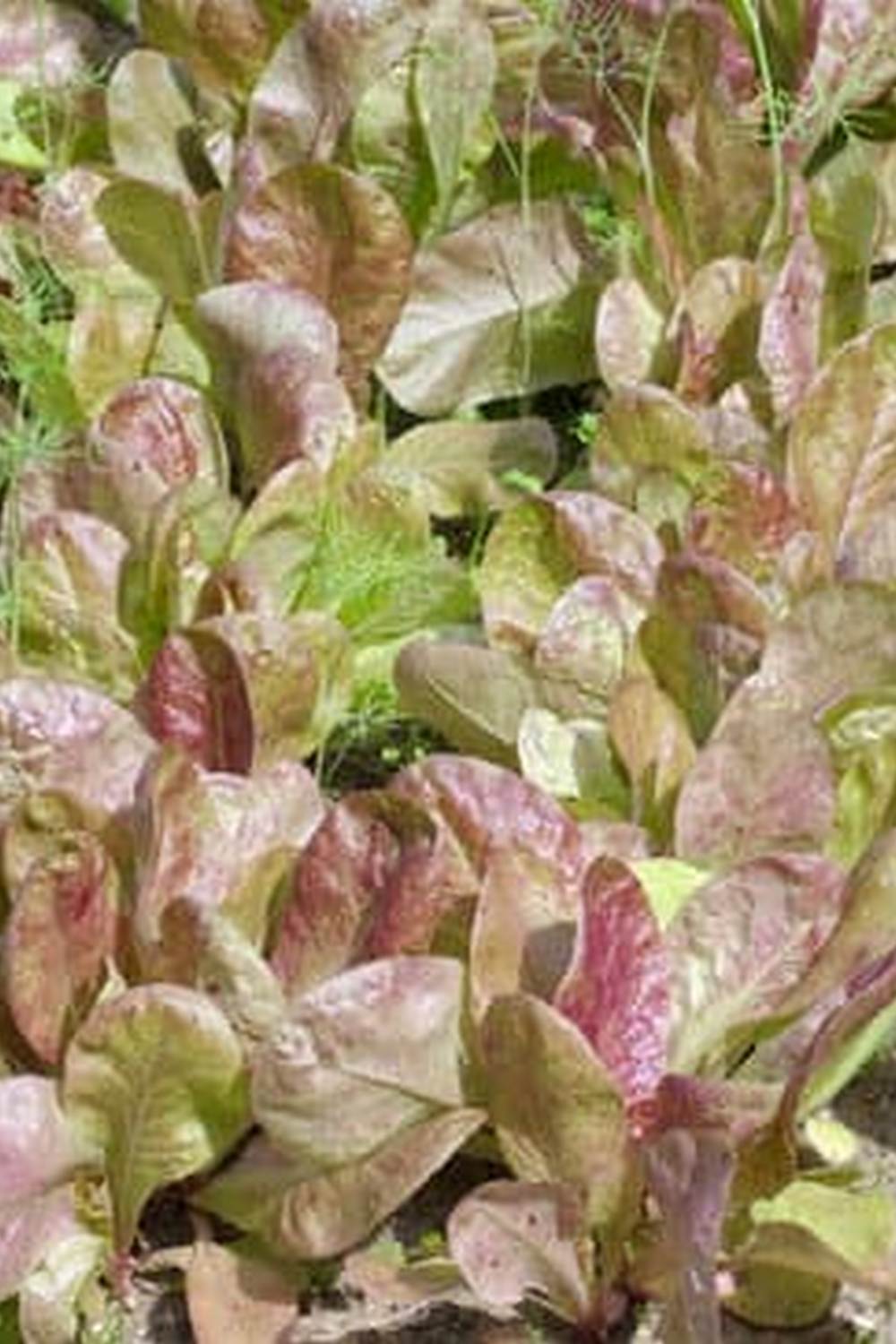Container vegetable gardening on a balcony is an excellent way to enjoy the benefits of homegrown produce even with limited space. Whether you live in an apartment or simply want to make the most of your outdoor living area, a balcony garden can provide a bountiful harvest and a relaxing hobby right outside your door.
This article will guide you through the process of creating and maintaining a thriving container vegetable garden on your balcony, from choosing the right containers and vegetables to dealing with pests and maximizing space.
Container gardening is not only a practical solution for urban dwellers, but it also offers various benefits that traditional gardeners may not enjoy. With the right techniques and materials, you can grow fresh vegetables in a small space, control soil quality, and minimize the risk of pests. In addition, balcony gardens can enhance your living environment by adding greenery and providing a peaceful sanctuary away from the hustle and bustle of city life.
In this article, we will explore different aspects of container vegetable gardening on a balcony, such as selecting the best containers and vegetables for your space, essential tools and materials needed for successful gardening, soil and fertilizer considerations, watering techniques, pest management strategies, maximizing limited space through vertical gardening techniques, and finally reaping the rewards of your labor with a bountiful harvest.
Whether you are new to gardening or looking to expand your green thumb to your balcony, this guide will help you create a flourishing vegetable garden in any small outdoor area.
Choosing the Right Containers for Your Balcony Garden
When it comes to container vegetable gardening on a balcony, choosing the right containers is crucial for the success of your garden. The containers you select will directly impact the growth and health of your plants, so it’s important to consider several factors when making your choice.
First and foremost, you’ll need to assess the available space on your balcony. Measure the area where you plan to place your containers to ensure that they will fit comfortably without overcrowding the space. Additionally, consider the weight-bearing capacity of your balcony and choose containers that are not too heavy for the structure to support.
Another important factor to consider when choosing containers for your balcony garden is drainage. Proper drainage is essential for the health of your plants, so be sure to select containers with adequate drainage holes or plan to drill them yourself if necessary.
Finally, think about the aesthetics of your container garden. Select containers that complement the style and design of your balcony, whether you prefer sleek modern planters or rustic terracotta pots. Keep in mind that lighter-colored containers will help reflect sunlight and prevent the soil from overheating during hot summer days.
| Factors to Consider | Considerations |
|---|---|
| Space | Measure available area and consider weight-bearing capacity |
| Drainage | Select containers with adequate drainage holes |
| Aesthetics | Choose containers that complement the style of your balcony |
By taking these factors into account, you can ensure that you choose the right containers for your balcony garden, setting yourself up for a successful and bountiful harvest of delicious homegrown vegetables.
Selecting the Best Vegetables for Container Gardening
When it comes to selecting the best vegetables for container gardening on a balcony, there are a few key factors to consider. Not all vegetables are well-suited for container gardening, especially on a limited space like a balcony. However, with the right choices, you can still enjoy a bountiful harvest of fresh produce right outside your door.
Here are some of the best vegetables for container gardening on a balcony:
- Tomatoes: Compact and dwarf varieties of tomatoes, such as cherry or grape tomatoes, are perfect for growing in containers. They require minimal space and can thrive in pots or hanging baskets.
- Peppers: Both sweet and hot peppers do well in containers. Choose smaller varieties like bell peppers or chili peppers, and make sure to provide adequate support for the plants as they grow.
- Herbs: Herbs like basil, parsley, mint, and chives are excellent choices for balcony container gardens. They add flavor to your dishes and can be grown in small pots or even window boxes.
In addition to these vegetables, other great options for container gardening on a balcony include lettuce, kale, spinach, and cucumbers. When choosing which vegetables to grow, consider the amount of sunlight your balcony receives, as well as the size of your containers.
Remember that proper care and maintenance will also play a significant role in the success of your balcony garden. With regular watering, feeding, and monitoring for pests and diseases, you can enjoy a thriving vegetable garden right outside your door. By selecting the best vegetables for container gardening on your balcony, you can turn even the smallest outdoor space into a productive and enjoyable garden.
Essential Tools and Materials for Balcony Gardening
When it comes to container vegetable gardening on a balcony, having the right tools and materials is essential for success. One of the most important items you will need is a good quality trowel for planting and digging in your containers. A hand trowel with a comfortable grip will make the task of potting and replanting much easier. Additionally, a durable pair of gardening gloves will help protect your hands as you work with the soil and plants.
Another essential tool for balcony gardening is a small watering can or hose attachment. Balcony gardens can dry out quickly, especially during hot summer months, so having an easy way to water your plants is crucial. Look for a watering can with a narrow spout that will allow you to target the roots of your plants without creating a mess on your balcony.
In terms of materials, choosing high-quality potting mix is important for the health of your balcony garden. Look for a mix that is specifically formulated for container gardening, as it will provide the right balance of nutrients and drainage for your vegetables. Additionally, investing in a few sturdy and well-made containers will ensure that your plants have enough space to grow and thrive.
Consider lightweight options such as plastic or resin containers, which are easy to move around and won’t add unnecessary weight to your balcony. By having the essential tools and materials on hand, you’ll be well-prepared to start your own successful container vegetable garden on your balcony.
Tips for Proper Soil and Fertilizer for Your Container Garden
To ensure a successful container vegetable gardening on a balcony, it is important to pay close attention to the soil and fertilizer used. With limited space and resources, it’s crucial to give your plants the best foundation for growth.
Choosing the Right Soil
When it comes to container gardening, using the right soil is key. Look for a high-quality potting mix that is well-draining and lightweight. Avoid using regular garden soil, as it may compact in containers and hinder root growth. Some good options include mixes specifically formulated for vegetables or those containing ingredients like perlite or vermiculite for improved drainage.
The Importance of Fertilizer
In a confined space like a balcony, plants rely on nutrient-dense soil to thrive. Choose a balanced, all-purpose fertilizer to provide essential nutrients for your vegetable plants. Consider slow-release fertilizers, which can help maintain consistent nutrient levels over time without the need for frequent reapplication.
Organic Options
For those looking for natural alternatives, there are many organic soil and fertilizer options available. Look for organic potting mixes enriched with compost or worm castings, as well as organic fertilizers made from materials such as seaweed, fish emulsion, or bone meal.
By paying attention to the soil and fertilizer used in your container vegetable gardening on a balcony, you can set your plants up for success and maximize their potential despite limited space.
Watering and Maintenance for Balcony Vegetable Gardens
When it comes to container vegetable gardening on a balcony, proper watering and maintenance are crucial for the success of your garden. Since containers can dry out more quickly than traditional garden beds, it’s important to stay on top of watering and regular maintenance to ensure the health and productivity of your balcony garden.
Here are some tips for watering and maintaining your balcony vegetable garden:
- Create a watering schedule: Because pots and containers can dry out quickly, it’s essential to establish a consistent watering schedule. Depending on the type of vegetables you’re growing and the climate in your area, you may need to water daily or every other day. Monitor the moisture level of the soil regularly to determine how often you need to water.
- Use the right watering technique: When watering container plants, it’s best to water at the base of the plants to prevent water from splashing onto the leaves, which can lead to disease. Consider using a drip irrigation system or a watering can with a long spout to deliver water directly to the soil.
- Regular maintenance: In addition to regular watering, balcony vegetable gardens require ongoing maintenance, such as pruning, staking, and fertilizing. Keep an eye out for overgrown or diseased plants and promptly address any issues that arise.
With these tips in mind, you can keep your container vegetable garden on your balcony thriving throughout the growing season. Proper watering and maintenance will help ensure a bountiful harvest of delicious homegrown vegetables.
Dealing With Pests and Diseases in a Limited Space
Choosing Resilient Plants
When it comes to container vegetable gardening on a balcony, it’s important to choose plants that are more resilient to pests and diseases. Selecting varieties that are known to be more resistant can help reduce the risk of dealing with infestations or diseases in a limited space. Look for vegetables such as cherry tomatoes, peppers, and herbs like basil and thyme, which tend to be hardier and less prone to issues.
Practicing Proper Maintenance
Regularly inspecting your balcony garden for signs of pests and diseases is essential for preventing them from causing widespread damage. By catching any issues early on, you can take action before they have a chance to spread. This includes removing any affected leaves or plants, as well as keeping the area clean and free of debris that could harbor pests or disease-causing organisms.
Natural Pest Control Methods
In a small space like a balcony, using chemical pesticides may not be the best option due to the close proximity of living spaces. Instead, consider using natural pest control methods such as introducing beneficial insects like ladybugs or lacewings, using insecticidal soaps or neem oil sprays, or implementing companion planting techniques. These methods can help keep pests at bay without resorting to harsh chemicals that could impact your living environment.
By taking these proactive measures and being diligent about monitoring the health of your plants, you can minimize the impact of pests and diseases in your container vegetable gardening balcony while maximizing the enjoyment of your bountiful harvest.
Maximizing Space and Vertical Gardening Techniques for Balcony Gardens
One of the biggest challenges of container vegetable gardening on a balcony is the limited space available. However, there are several techniques that can help maximize the space and allow for a more productive garden. Vertical gardening is one such technique that involves growing plants upwards instead of outwards.
This can be achieved by using trellises, hanging baskets, or stacking containers vertically. Not only does vertical gardening save space, but it also allows for better air circulation and sunlight exposure for your plants.
Another technique for maximizing space in balcony gardens is using tiered plant stands or shelving units. These can provide multiple levels for planting and make the most of the vertical space available. Additionally, utilizing wall-mounted planters or railing-mounted containers can help free up floor space while still allowing for ample growing room for your vegetable plants.
It’s important to consider the weight-bearing capacity of your balcony when implementing these vertical gardening techniques. Ensure that any shelving, hanging baskets, or stacked containers are securely anchored to prevent accidents or damage to your balcony. By incorporating these space-saving techniques, you can enjoy a bountiful harvest from your container vegetable garden on your balcony.
| Vertical Gardening Technique | Description |
|---|---|
| Trellises | Growing plants upwards by providing support with trellises or stakes. |
| Hanging Baskets | Suspending plant containers from above to utilize overhead space. |
| Tiered Plant Stands | Providing multiple levels for planting to maximize vertical space. |
Harvesting and Enjoying the Fruits of Your Balcony Garden’s Labor
In conclusion, container vegetable gardening on a balcony can be a rewarding and enjoyable experience. The benefits of growing your own vegetables right outside your door are numerous, from having access to fresh produce to the satisfaction of nurturing and harvesting your own crops. By choosing the right containers, selecting suitable vegetables, and using essential tools and materials, you can create a thriving garden on your balcony.
Proper soil and fertilizer are essential for the success of your container garden, as well as regular watering and maintenance. Dealing with pests and diseases in a limited space can be challenging, but with the right techniques, you can keep your plants healthy. Maximize space on your balcony by using vertical gardening techniques, allowing you to grow even more vegetables in a small area.
Finally, after all the hard work and dedication, the time will come for harvesting the fruits of your balcony garden’s labor. There is nothing quite like picking fresh vegetables from your own garden and incorporating them into delicious meals.
Whether it’s crisp lettuce for a salad or juicy tomatoes for pasta sauce, the satisfaction of enjoying the bounty of your balcony garden makes all the effort worthwhile. So get started on your container vegetable gardening journey and soon you’ll be reaping the rewards of your own home-grown produce.
Frequently Asked Questions
What Vegetables Can You Grow in a Balcony?
You can grow a variety of vegetables on your balcony, including tomatoes, peppers, lettuce, spinach, radishes, and herbs like basil and cilantro. These vegetables are well-suited for container gardening.
What Is the Best Container for Balcony Vegetable Garden?
The best containers for a balcony vegetable garden are ones that provide adequate drainage, such as plastic or ceramic pots with drainage holes. Additionally, ensure the container is large enough to accommodate the plant’s root system.
What Is the Best Vegetable to Grow in a Container?
The best vegetable to grow in a container is one that doesn’t require a lot of space, such as lettuce or green onions. These vegetables can thrive in a container environment and don’t need a deep rooting system to grow successfully.

If you’re looking to get into vegetable gardening, or are just looking for some tips on how to make your current garden better, then you’ve come to the right place! My name is Ethel and I have been gardening for years. In this blog, I’m going to share with you some of my best tips on how to create a successful vegetable garden.





